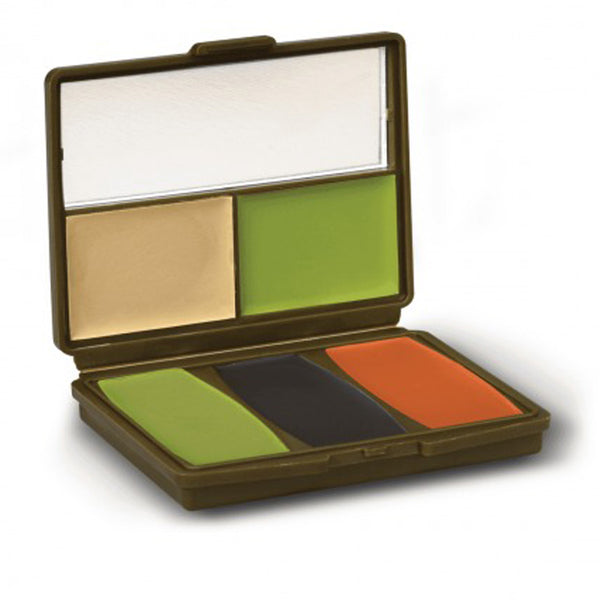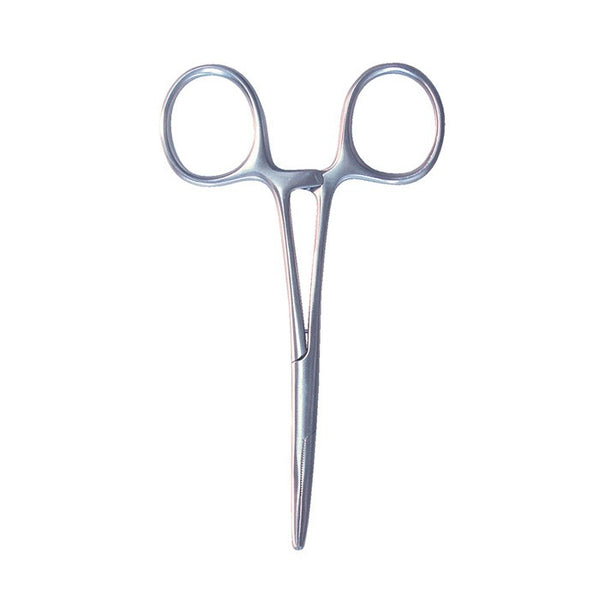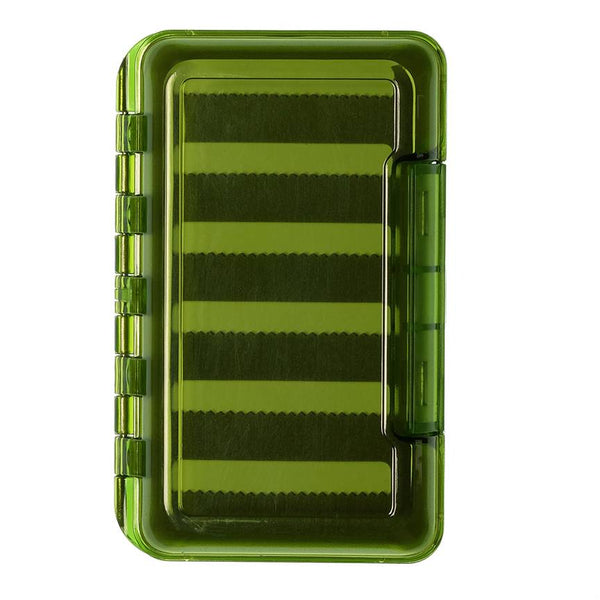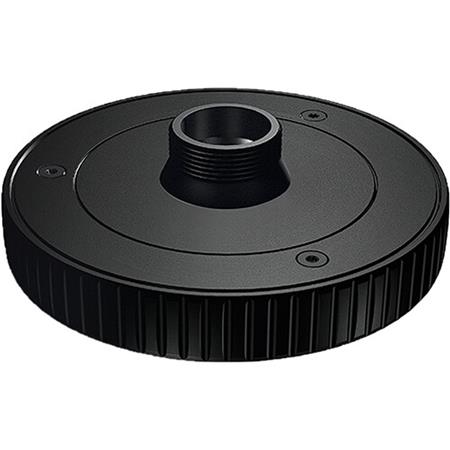We know that water becomes extremely precious when you have to hike to get it, especially if your camped in a high country basin chasing bucks and bulls. I know some hunters will drink straight from the water source, but contaminants (bacteria, protozoa, and cysts like E. coli and Giardia) are actually quite common and I would highly recommend treating water before you drink it.
Fortunately, there are a lot of great options on the market to treat your water and make is safe to drink quickly. In this article we'll go over the different types of systems available and discuss the advantages and disadvantages of each filter system type.
 Pump filters use hand power to pump water through a filter to remove contaminates. Popular pumps include the Katadyn Hiker Pro, MSR Miniworks and similar products. The pump systems are easy to use and fast to filter large volumes of water. Simply drop the intake hose into the water source and the outlet hose into your water container and pump!
Advantages
Pump filters use hand power to pump water through a filter to remove contaminates. Popular pumps include the Katadyn Hiker Pro, MSR Miniworks and similar products. The pump systems are easy to use and fast to filter large volumes of water. Simply drop the intake hose into the water source and the outlet hose into your water container and pump!
Advantages
 Gravity systems take the leg (arm) work out of filtering water. These systems will use a larger reservoir and use the force of gravity to pull the water through a filter and into a clean water container. Great options include the Sawyer 1 Gallon Gravity System, Katadyn Basecamp/Gravity Camp, Platypus Gravity Works, etc.
Advantages:
Gravity systems take the leg (arm) work out of filtering water. These systems will use a larger reservoir and use the force of gravity to pull the water through a filter and into a clean water container. Great options include the Sawyer 1 Gallon Gravity System, Katadyn Basecamp/Gravity Camp, Platypus Gravity Works, etc.
Advantages:
 We'll include bottle systems, inline bladder, straws, and squeeze filters in this category. An inline system requires squeezing or sucking water through a filter to remove contaminants. Popular Inline systems include the Lifestraw, In bottle systems like the Sawyer Water Bottle, Sawyer Squeeze, MINI, Katadyn BeFree and similar products.
Advantages:
We'll include bottle systems, inline bladder, straws, and squeeze filters in this category. An inline system requires squeezing or sucking water through a filter to remove contaminants. Popular Inline systems include the Lifestraw, In bottle systems like the Sawyer Water Bottle, Sawyer Squeeze, MINI, Katadyn BeFree and similar products.
Advantages:
 Using Chemicals like Iodine and newer alternatives to treat water can be a great way to treat water. Simply put tablets into the water container and wait for chemical process to finish. Options include: Aquamira, Micropur, Potable Aqua, etc.
Advantages:
Using Chemicals like Iodine and newer alternatives to treat water can be a great way to treat water. Simply put tablets into the water container and wait for chemical process to finish. Options include: Aquamira, Micropur, Potable Aqua, etc.
Advantages:
 UV systems use and ultraviolet light to kill contaminants. Just turn it on, stir the water until the timer is up and drink! Popular products are the various options from Steripen.
Advantages:
UV systems use and ultraviolet light to kill contaminants. Just turn it on, stir the water until the timer is up and drink! Popular products are the various options from Steripen.
Advantages:
TYPES OF FILTERS/TREATMENT SYSTEMS:
Pump Filters
 Pump filters use hand power to pump water through a filter to remove contaminates. Popular pumps include the Katadyn Hiker Pro, MSR Miniworks and similar products. The pump systems are easy to use and fast to filter large volumes of water. Simply drop the intake hose into the water source and the outlet hose into your water container and pump!
Advantages
Pump filters use hand power to pump water through a filter to remove contaminates. Popular pumps include the Katadyn Hiker Pro, MSR Miniworks and similar products. The pump systems are easy to use and fast to filter large volumes of water. Simply drop the intake hose into the water source and the outlet hose into your water container and pump!
Advantages
- Water can be drawn from shallow water sources common in the high country
- Fast
- Get exactly the amount of water you need
- Can be used with almost any container
- Pumping is work
- Some Field Cleaning will be required
- Pumps are some of the heaviest and bulkiest filter type
Gravity Systems
 Gravity systems take the leg (arm) work out of filtering water. These systems will use a larger reservoir and use the force of gravity to pull the water through a filter and into a clean water container. Great options include the Sawyer 1 Gallon Gravity System, Katadyn Basecamp/Gravity Camp, Platypus Gravity Works, etc.
Advantages:
Gravity systems take the leg (arm) work out of filtering water. These systems will use a larger reservoir and use the force of gravity to pull the water through a filter and into a clean water container. Great options include the Sawyer 1 Gallon Gravity System, Katadyn Basecamp/Gravity Camp, Platypus Gravity Works, etc.
Advantages:
- Gravity does the work
- Easy to process large volumes of water for groups
- Filter is typically replaceable, without replacing entire system
- Lightweight
- Need a place to hang reservoir
- Slower than pumping
- Harder to fill large reservoirs from small seeps or streams
- Some Field Cleaning likely required
Inline Systems
 We'll include bottle systems, inline bladder, straws, and squeeze filters in this category. An inline system requires squeezing or sucking water through a filter to remove contaminants. Popular Inline systems include the Lifestraw, In bottle systems like the Sawyer Water Bottle, Sawyer Squeeze, MINI, Katadyn BeFree and similar products.
Advantages:
We'll include bottle systems, inline bladder, straws, and squeeze filters in this category. An inline system requires squeezing or sucking water through a filter to remove contaminants. Popular Inline systems include the Lifestraw, In bottle systems like the Sawyer Water Bottle, Sawyer Squeeze, MINI, Katadyn BeFree and similar products.
Advantages:
- Very easy, just fill and drink
- Many of these can also be used in a gravity system
- Filter is typically replaceable
- Usually Cheaper than other filter options and very lightweight
- Harder to fill large reservoirs from small seeps or streams
- Water Volume is limited by bottle size
- Sometimes these are single person systems (if you don't want to share)
Chemical Treatment
 Using Chemicals like Iodine and newer alternatives to treat water can be a great way to treat water. Simply put tablets into the water container and wait for chemical process to finish. Options include: Aquamira, Micropur, Potable Aqua, etc.
Advantages:
Using Chemicals like Iodine and newer alternatives to treat water can be a great way to treat water. Simply put tablets into the water container and wait for chemical process to finish. Options include: Aquamira, Micropur, Potable Aqua, etc.
Advantages:
- Smallest and lightest option (besides just drinking dirty water)
- Easy to use
- Perfect for backup system (just in case)
- Waiting period for chemicals to work
- Don't use if you're pregnant (depends on type)
- Can impart bad taste
UV Systems
 UV systems use and ultraviolet light to kill contaminants. Just turn it on, stir the water until the timer is up and drink! Popular products are the various options from Steripen.
Advantages:
UV systems use and ultraviolet light to kill contaminants. Just turn it on, stir the water until the timer is up and drink! Popular products are the various options from Steripen.
Advantages:
- Lightweight
- Easy to Use
- Never need to replace filter
- Batteries can die
- Electronic
- Doesn't remove floating contaminants or silt
- Won't work with turbid water
- Volume limits (need to use it more than once depending on volume of water)
Boiling
Boiling water is always an option. The CDC recommends boiling water at elevations above 6562 feet for 3 minutes and allowing to cool before drinking. This can always be a great fallback as long as you carry something you can feasibly boil water in. Advantages:- Just add Fuel - it's a ready way to treat water at any time
- Works with murky and turbid water
- Great backup method if needed
- Takes Extra fuel
- Extra Time
- Needs to cool before drinking
Filters vs. Purifiers:
Most water treatment systems are water filters. The big difference between filters and purifiers is what they remove from the water. Purifiers have a much smaller pore size and will filter out smaller contaminants than filters. As a result, purifiers are typically slower and heavier. For North American hunting a filter is typically adequate.Good Practices for Backcountry Water Treatment:
- Always label your dirty and clean water reservoirs - I refer to untreated water as dirty water. Label your reservoirs if you're carrying more than one.
- Look for cleanest water possible or pre-filter turbid water with a coffee filter to extend the life of your water filter system - water with silt or twigs, or other floatants can be filtered through a coffee filter (which weighs almost nothing) to remove the bigger stuff before it gets caught in your filter.
- Keep your hands dry - if your hands are wet with contaminated water
- Carry replacement parts - you never know when your filter might plug and you need to do some backcountry repair.
- Carry a backup - I recommend tablets, or a Sawyer MINI







: invalid url input -->)










Leave a comment